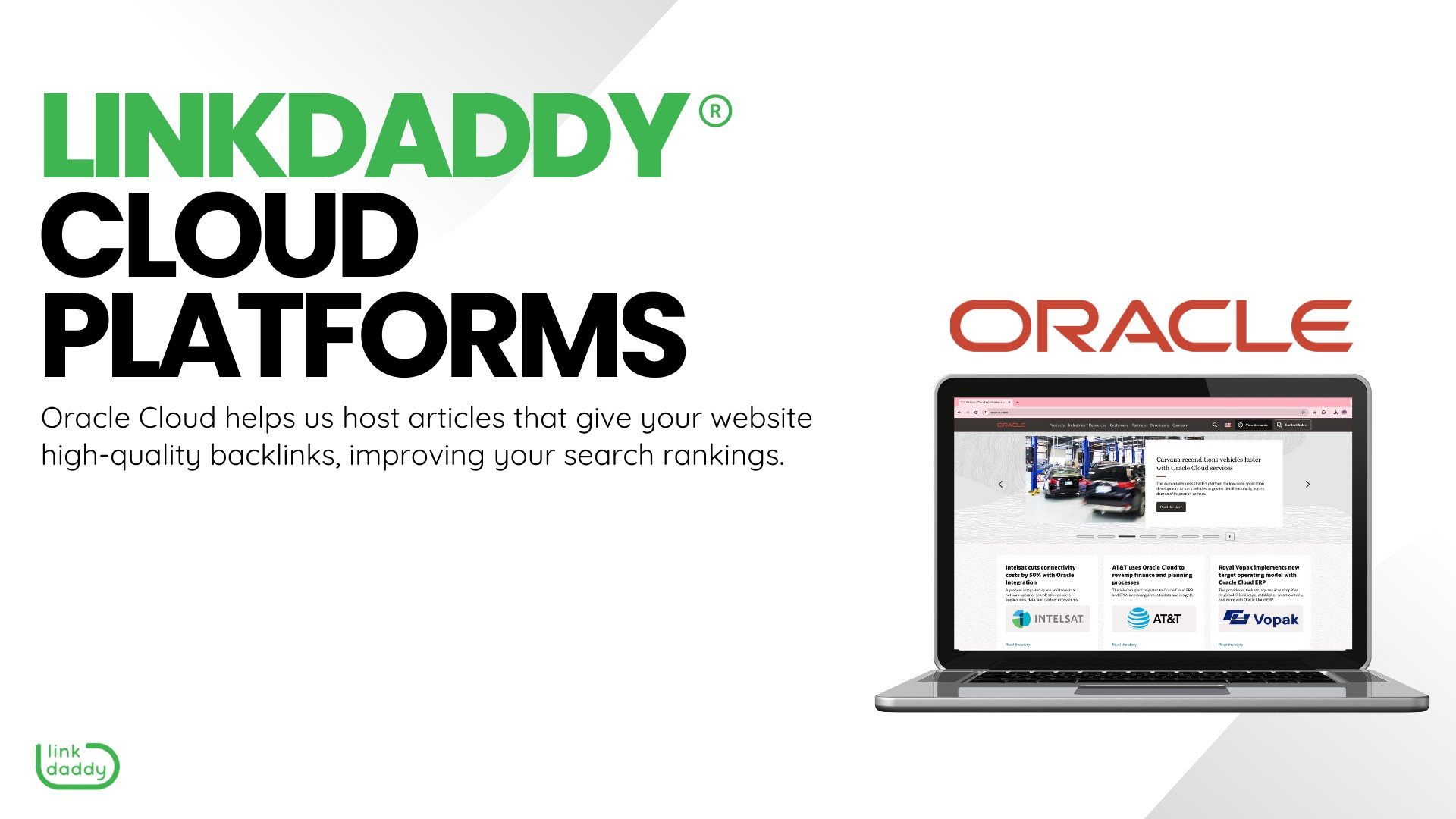Universal Cloud Service Explained: Solutions for Global Enterprises
Universal Cloud Service Explained: Solutions for Global Enterprises
Blog Article
A Practical Method to Implementing Cloud Services for Maximum ROI

Assessing Current Infrastructure
When reviewing the feasibility of implementing cloud services for optimum return on financial investment, the initial step involves examining the current infrastructure in position. linkdaddy cloud services press release. Comprehending the existing hardware, software program, network capabilities, and storage space systems is important to determine the compatibility and integration needs for moving to the cloud
Assessment of the existing infrastructure involves carrying out a thorough audit to recognize toughness, weak points, and potential areas for enhancement. It is vital to assess factors such as web server capability, data safety actions, redundancy procedures, and scalability options. By getting a clear understanding of the present state of the facilities, companies can successfully strategize the shift and plan to shadow services.
Furthermore, analyzing the existing framework allows companies to straighten their cloud adoption approach with their particular requirements and objectives. This evaluation provides useful insights into maximizing source application, improving efficiency, and making certain smooth combination with cloud solutions. Inevitably, a complete evaluation of the existing infrastructure lays the structure for an effective cloud implementation that maximizes return on financial investment.

Identifying Business Needs
In order to enhance resource application and align cloud fostering with details organization purposes, the following vital step after evaluating the current framework is recognizing the distinct demands of the company. Comprehending business needs is necessary to tailor the cloud services successfully. This procedure involves engaging with essential stakeholders throughout divisions to collect insights right into the company's objectives, opportunities, and difficulties. By performing extensive interviews, surveys, and analysis of existing process, it is feasible to identify areas where cloud solutions can provide one of the most significant effect.
Identifying business needs additionally includes evaluating aspects such as scalability requirements, information protection worries, conformity policies, and spending plan restraints. Each of these facets plays a crucial duty in establishing the most appropriate cloud options for the company. By aligning the capabilities of cloud solutions with the particular needs of business, business can make certain that their investment in cloud innovation provides maximum roi. Moreover, by attending to these requirements upfront, companies can stay clear of pricey errors and ensure a smooth shift to the cloud atmosphere.
Selecting the Right Cloud Solution Supplier
Choosing the optimal cloud company is a pivotal choice that can substantially influence the success of a company's cloud fostering method. When selecting a cloud provider, several aspects must be weblink taken into consideration to ensure that the chosen provider aligns with the company's objectives and requirements. It is necessary to examine the company's online reputation, integrity, protection steps, compliance accreditations, and scalability options.
Reputation plays a vital role as it shows the company's performance history in delivering high quality solutions and meeting customer expectations (cloud services press release). Reliability is an additional key consideration, as downtime or solution disturbances can have informative post destructive impacts on organization operations. Safety and security is critical when turning over information to a 3rd party, so it is essential to analyze the company's security methods and data security actions
In addition, conformity qualifications make certain that the company adheres to industry requirements and laws, which is especially essential for business operating in controlled fields. Lastly, scalability alternatives are important to suit future development and transforming business demands efficiently. By very carefully assessing these aspects, companies can choose a cloud service copyright that ideal suits their requirements and takes full advantage of the return on investment.
Planning Movement and Execution
To guarantee a seamless shift to shadow solutions, thorough preparation and strategic execution of migration and application processes are vital. The initial action in this process entails carrying out a complete assessment of the existing infrastructure and applications to determine the compatibility with cloud services. It is crucial to identify dependences, efficiency needs, and security considerations to establish a detailed movement plan. Involving stakeholders from numerous departments can aid in garnering support and making sure that the migration lines up with the total business purposes.
Once the movement plan is in area, the execution stage should concentrate on prioritizing workloads based on urgency and intricacy. This phased approach permits screening and recognition at each phase, minimizing disturbances and making sure a smooth transition. It is critical to establish clear interaction networks and provide adequate training to employees to facilitate adoption and attend to any problems.
Constant tracking and optimization post-implementation are essential to guarantee that the cloud services are providing the expected ROI. Regular performance evaluations and responses devices can aid in recognizing areas for improvement and making best use of the advantages of cloud services.
Tracking Efficiency and Optimization
Efficient tracking and optimization of cloud solutions performance play a critical role in taking full advantage of ROI and making sure functional efficiency. By continuously keeping track of the performance of cloud services, organizations can identify prospective issues quickly, enhance resource allocation, and improve total system performance. Real-time tracking tools permit the tracking of essential efficiency indications, such as action times, resource use, and availability, enabling aggressive problem resolution and notified decision-making.

Furthermore, utilizing anticipating analytics and artificial intelligence formulas can help companies anticipate future performance fads, expect potential traffic jams, and proactively maximize cloud sources. Continual performance tracking and optimization not only boost the user experience but additionally add to cost savings and raised ROI in the future.
Verdict
In conclusion, the effective application of cloud solutions needs an extensive analysis of existing infrastructure, recognition of service needs, option of the ideal cloud provider, careful planning for migration and implementation, and constant monitoring for performance optimization. By following these actions faithfully, organizations can optimize their return on financial investment in cloud services and achieve greater effectiveness and dexterity in their operations.
In today's hectic organization atmosphere, the application of cloud solutions has actually become an important variable in enhancing functional efficiency and driving substantial return on investment (ROI) By very carefully assessing existing framework, determining specific service needs, picking the best cloud service company, and carefully planning the movement and implementation process, companies can position themselves for success in the cloud. Comprehending the business needs is necessary to tailor the cloud services properly. By straightening the capacities of cloud solutions with the details needs of the organization, business can guarantee that their financial investment in cloud technology provides maximum return on investment.Selecting the perfect cloud solution copyright is a crucial choice that can significantly affect the success of a company's cloud adoption strategy.
Report this page